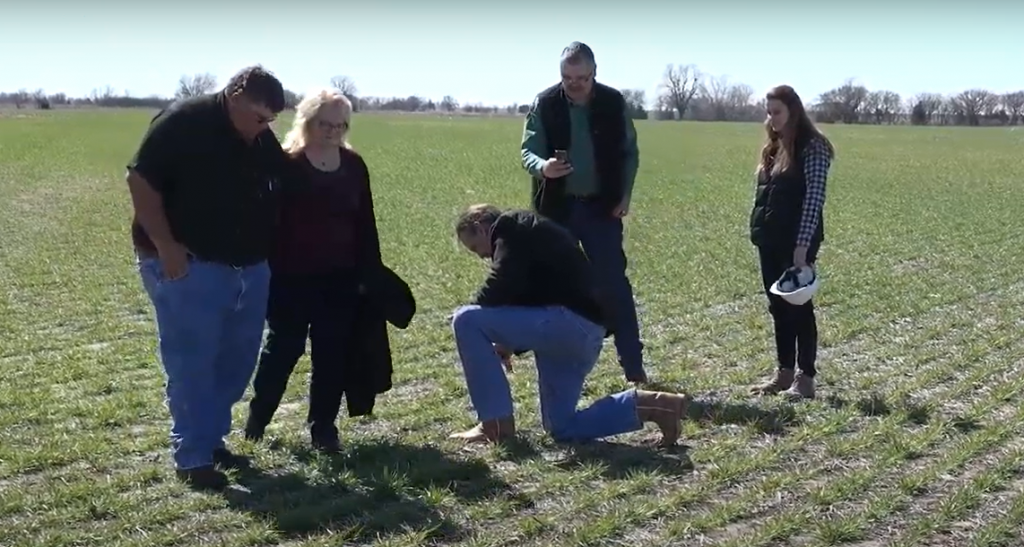
The National Association of Conservation Districts (NACD) recently shared the results of a muti-year collaboration with the Soil Health Institute (SHI) and the Natural Resources Conservation Service (NRCS), which highlight the positive impacts of improving soil health on farm profitability and resilience. Extensive interviews were conducted with 30 farmers implementing soil health management systems (SHMS) across 20 states to learn about their experiences with adopting those systems and to assess the impact of that adoption on net farm income.
Economics of Soil Health Systems: A Guided Tour
The United States Department of Agriculture (USDA) Natural Resources Conservation Service (NRCS) entered into an agreement with the Soil Health Institute (SHI) and the National Association of Conservation Districts (NACD) to facilitate a project entitled “Economics of Soil Health Systems to Enhance Adoption and Environmental Benefits.” The purpose of this agreement is to assess, demonstrate and communicate the economics of soil health-promoting practices and systems to increase adoption of soil health management systems to achieve environmental and on-farm benefits.
Through this agreement, the partners will enhance adoption of soil health management systems by providing quantitative evaluation of the economics associated with those systems based on partial budget analysis of farmers’ management practices; and conducting a joint communication/education campaign to convey results to farmers, field conservationists, agricultural consultants, and others who influence adoption. SHI and NACD conducted extensive interviews with 30 farmers implementing soil health management systems to learn about their experiences with adopting those systems and to assess the impact of that adoption on net farm income. Based on those results, NACD and SHI have created 30 fact sheets and 30 videos to support soil health training, education and outreach, and these deliverables are co-branded to be used by all parties. NACD also conducted a focus group in February 2020 with Soil Health Champions who did not participate in this interview to ground-truth some of the findings from SHI and NACD.
The executive summary can be found here . The guided story map will take you through all 30 interviews. One of the interviews is with Rick Jeans of Kay County, Oklahoma.
Rick Jeans farms 3,000 acres of grass and cropland in Kay County, Oklahoma. Rick is a third-generation farmer and began farming after he graduated from Oklahoma State University in 1981. He has served on the Kay County Conservation District board for over 25 years.
Rick and his wife Diane grow mostly soybeans, grain sorghum and winter wheat, and 500 acres of their operation is in pasture for 100 heads of cattle. The operation has been no-till for about 30 years, and the pair have been using cover crops since about 2013.
“What got me into no-till was I had a neighbor down the road that had been doing some no-tilling of some soybeans; he was having really good results,” he said. Rick and his family started experimenting with the practice and saw success.
Rick and Diane got into cover crops around 2013 after a Natural Resources Conservation Service (NRCS) State Soil Scientist from Diane’s leadership class came to their farm and encouraged them to try the practice. That first year, they tried a concoction of triticale, barley, oats, wheat, soybeans, Austrian winter peas, vetch, turnip and radishes. “We liked what we saw enough that it was like, ‘Yes, let’s try it again’. We’ve been doing it ever since,” Rick said. Rick has tweaked his cover crop concoction a little bit, but still plants five or six different species each year.
“I think what’s benefited me more than anything was getting the water in the soil,” Rick said, “The infiltration has improved drastically.” He’s seen his soil come to life with earthworms, and his soil organic matter has increased in several of their fields. He also no longer experiences compaction issues. “With this soil health stuff, we just don’t see the problems we used to have,” he said.
Economically, his reduced labor costs mean he can spray many more acres in a day with his sprayer. To farmers interested in trying these practices, Rick says, “Take it slow. Get your feet under you, that way you know if this is going to work for you, and you can increase it in the future.”
The factsheet from his interview can be found here, or viewed below.














